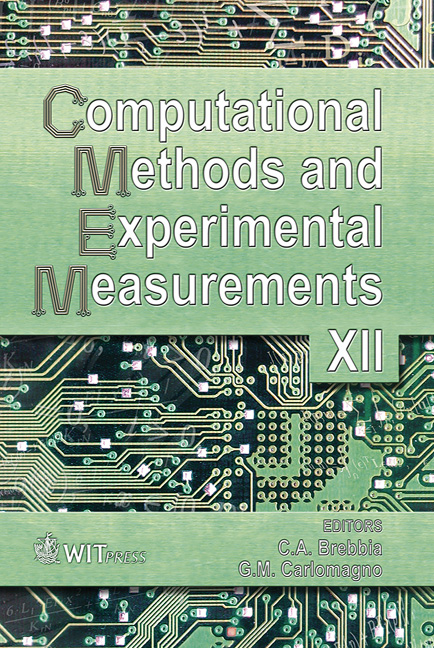Experiments On Transient Dynamic Features In Complex Separated Convection Boundary Layer Flows
Price
Free (open access)
Transaction
Volume
41
Pages
8
Published
2005
Size
1,570 kb
Paper DOI
10.2495/CMEM050301
Copyright
WIT Press
Author(s)
S. Fohanno, F. Beaumont & G. Polidori
Abstract
Although the fluid dynamics around an isolated heated circular cylinder are now reasonably well understood, this is not the case when the cylinder is positioned close to a free convection plane wall boundary layer. One mechanism by which transitional boundary layer flows become turbulent is the instability of vortex interaction. The core of this contribution is to present flow visualizations showing the formation and development of resulting vortical complex structures in the interaction of opposite naturally-induced flows. To the authors’ knowledge, these complex phenomena have not been clearly investigated and documented. Therefore, the purpose of this study is to provide a detailed description of the resulting transient physical mechanisms. The effect of changing the gap between the cylinder and the wall has clearly shown the growth in time of both dipolar vortex and shear layer instabilities and complex vortical separations of the wall boundary layer. Keywords: free convection, flow visualization, vortical instabilities. 1 Introduction This purely experimental work is part of a set of studies on possible heat transfer improvements (French research network AMETH) and is primarily concerned with transient free convection flows in the laminar regime. In particular, this work is dealing with the analysis of fundamental mechanisms of transient free convection along a uniformly heated vertical plate. In addition, the growth of both thermal and dynamical boundary layers is perturbed due to the presence of a cooled obstacle in the vicinity of the plate. The interest for such studies comes from their realistic nature depicting practical examples found in various domains
Keywords
free convection, flow visualization, vortical instabilities.





